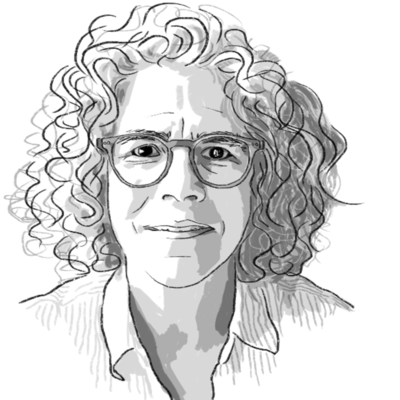Embedded in the Inflation Reduction Act is funding for cleaner electric power, electric and hydrogen vehicles, carbon capture technology, and more. Some analysts see a model here for climate progress.
Monitor Daily Podcast
- Follow us:
- Apple Podcasts
- Spotify
- RSS Feed
- Download
 Clara Germani
Clara Germani
What experience in your life most shaped your view about abortion?
That question can be a debate stopper and a conversation starter. It’s promoted in the new “Guide to Dialogues About Abortion,” released in response to the overturning of Roe v. Wade.
Leaning in with genuine curiosity about the nuance and complexity underlying polarized abortion rhetoric can open “unimaginable ways to move forward,” says Daniel Pritchard of Essential Partners. The Cambridge, Massachusetts, nonprofit developed the guide and helps create community dialogues on contentious issues such as guns, race, and education.
Powerful evidence of the “unimaginable” is captured in a new docuseries, “The Abortion Talks,” produced by Josh Sabey and Sarah Perkins. Previewed last week, it is about a six-year clandestine dialogue between three abortion-rights and three anti-abortion leaders. Sparked by their mutual shock over the 1994 Brookline, Massachusetts, abortion clinic murders, the women’s talks were facilitated by Essential Partners – then the Public Conversation Project.
After two trust-building years of secret dialogue, risking each of the women’s reputations among hardcore constituents, one anti-abortion leader – Madeline McComish, then president of Massachusetts Citizens for Life – described her humbling “breakthrough” moment. “I realized,” she says in the film, “we were never going to agree,” that this really was about listening – a respectful conversation about deep moral differences.
And then came years more of dialogue in which, says Nicki Nichols Gamble, then president of the Planned Parenthood League of Massachusetts, “we became friends, strange as though that seems even to me. ... It changed my life.”
What did the talks accomplish? In the Boston abortion arena, rhetoric was toned down a bit. But no minds were changed on abortion – and yet so much did change. The film exhaustively documents the goodwill and humility these women mustered and held simultaneously with their opposing moral convictions.
As a mediator in the talks, Susan Podziba says: The essential humanity of the talks was respect – “in the heart of the darkness, to see that light.”










